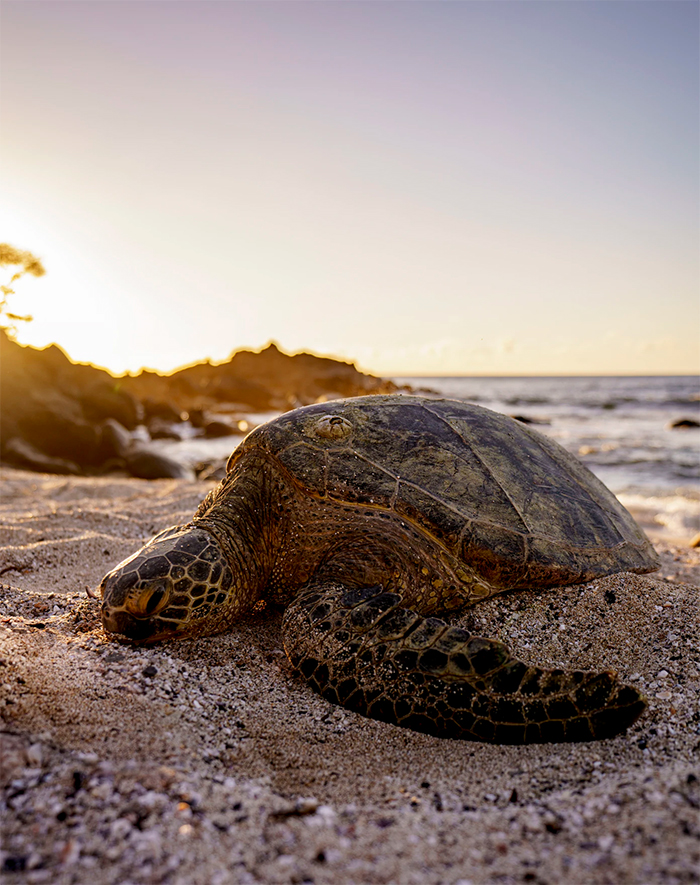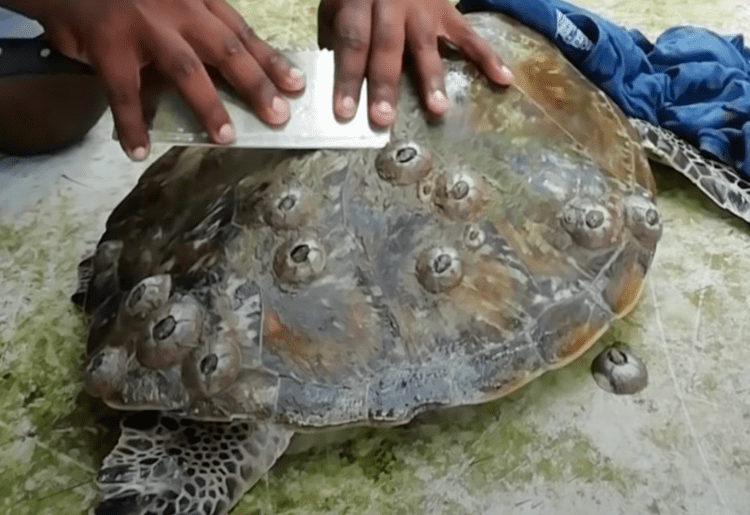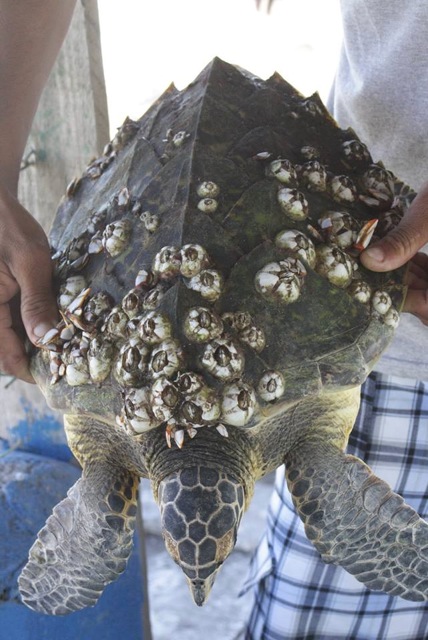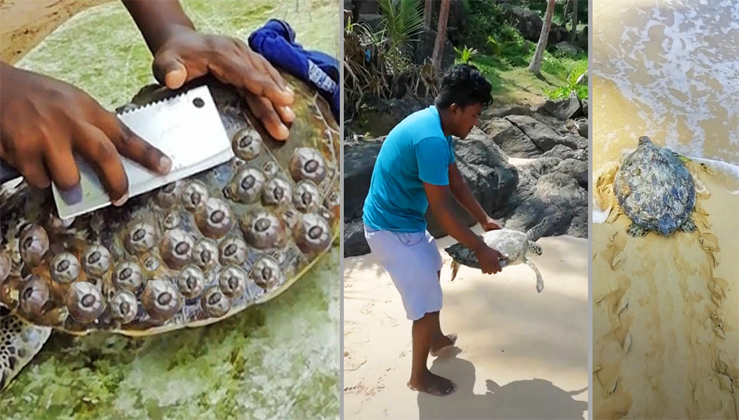
Though not considered parasites, barnacles can endanger the lives of sea turtles when they attach to them in excessive amounts. While most barnacles attach to the turtle’s hard shell, some of them can adhere to the head, fins, or tail. And when they burrow into the turtle’s skin, they can cause discomfort and inflict open wounds that may lead to infection. Therefore, if you come across a stranded sea turtle on the shore with an excessive barnacle cover on its body, you can save its life by removing these nuisances. A man in Sri Lanka shared a video of how he removed barnacles from a sea turtle’s shell to demonstrate the proper way to do it.

In his YouTube video, Chika Boy revealed how he removed barnacles from a sea turtle’s shell using a butcher knife. Barnacles can be scraped off with similar tools, but caution must be exercised to avoid damaging the shell. Barnacles are small, sticky crustaceans that thrive by adhering to hard surfaces like rocks, boats, and sea turtles. These sticky creatures sometimes embed themselves in the shell and burrow beyond the shell and plastron. Therefore, forcefully removing them can damage the shell and cause serious injuries.

In addition to discomfort and potential infection, an overload of barnacles hinders sea turtles from moving swiftly and may impede their ability to swim. The added weight on their shell also increases surface resistance, making swimming more strenuous. With the heavy load and limited mobility, sea turtles may struggle to forage for food. In the worst cases, barnacles can also attach to the eyes and mouth. When this happens, they won’t be able to see or eat properly. And since sea turtles have no specific mechanism to rid themselves of barnacles, this condition can lead to starvation and even death.

Through his video, Chika Boy aims to encourage everyone to save a heavily infested sea turtle if they come across one. He also shared another video where he can be seen rescuing another sea turtle entangled in a fishing net. Similar to his first video, the marine reptile he rescued was covered in barnacles. So, he took the time to carefully remove all the barnacles from the sea turtle’s shell, ensuring its safety and well-being.




